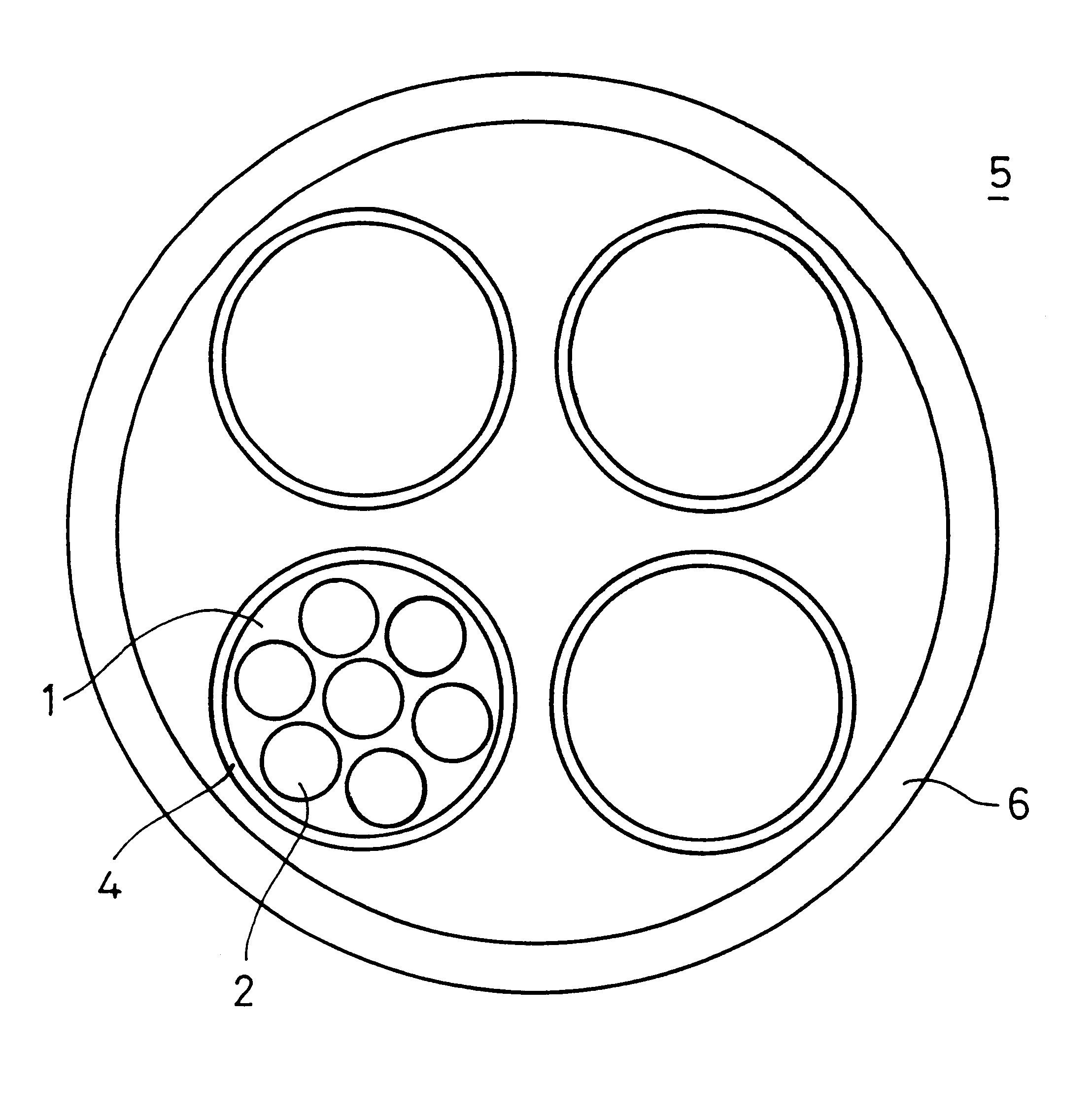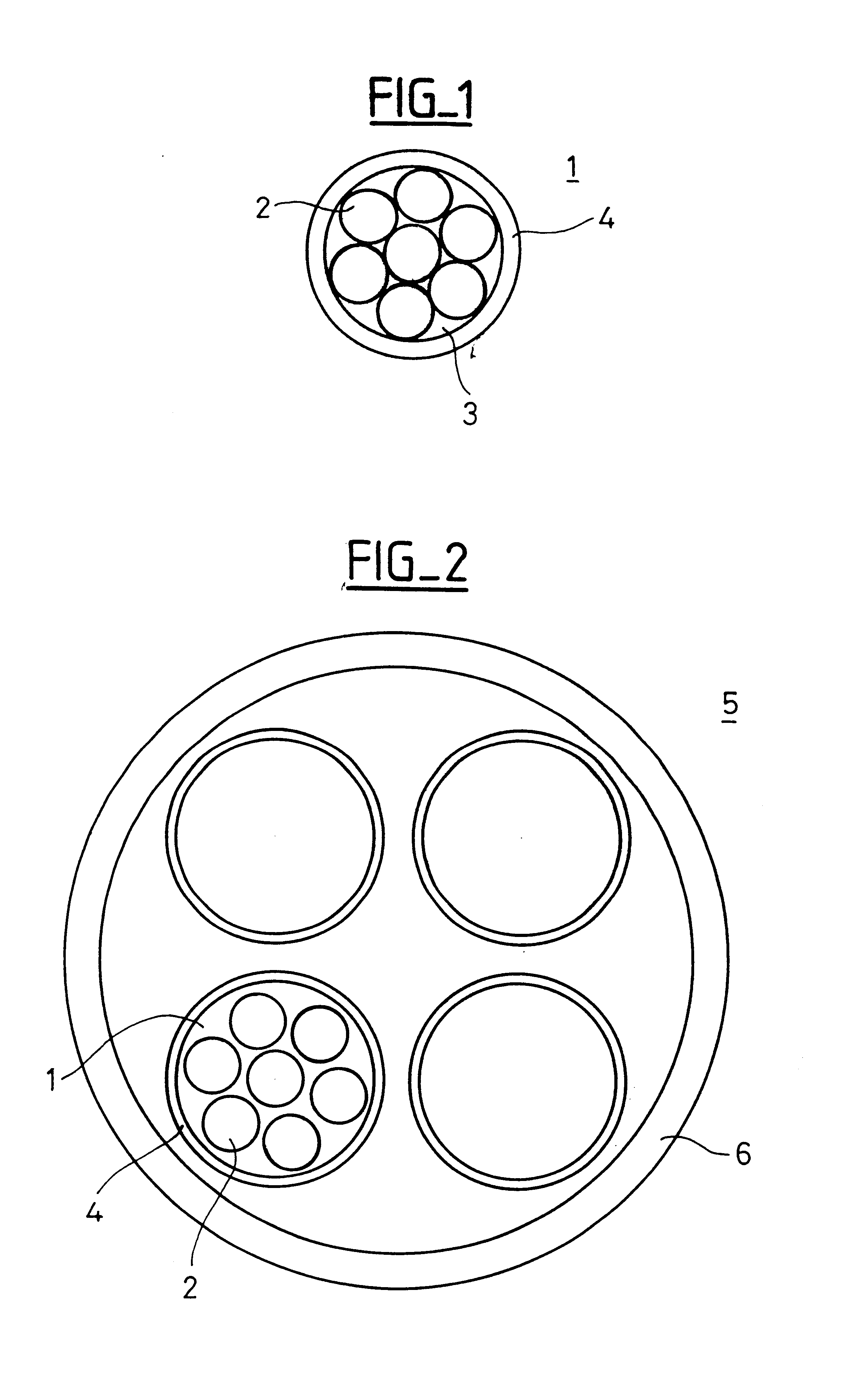Protective skin for optical fibers
a technology for protecting skin and optical fibers, applied in the direction of optical elements, cables, instruments, etc., can solve the problems of not being very flexible, reducing protection, and not enabling the fiber to be accessed with the fingers
- Summary
- Abstract
- Description
- Claims
- Application Information
AI Technical Summary
Problems solved by technology
Method used
Image
Examples
Embodiment Construction
FIG. 1 is a section view of a telecommunications cable module 1 comprising at least one and generally a plurality of optical fibers 2. The optical fibers 2 are surrounded by a flexible tube 4 referred to as a "skin". The gaps between the fibers are general occupied by a hydrophobic gel 3, e.g. based on silicones.
It is also possible to use a powder that swells, or to leave nothing between the fibers. The skin 4 is applied to the set of optical fibers, e.g. by extrusion. The thickness of the skin 4 is preferably small, e.g. lying in the range 0.05 millimeters (mm) to 0.25 mm, and is preferably 0.15 mm. Small thickness is desirable insofar as it facilities access to the fiber and makes it possible to reduce the overall weight of the cable. The lower limit of thickness is given by the protection which the skin gives to the fiber, and by the constraints involved in manufacturing the skin.
FIG. 2 is a diagram of a telecommunications cable 5 having a plurality of optical fiber modules 1. Th...
PUM
| Property | Measurement | Unit |
|---|---|---|
| melting point | aaaaa | aaaaa |
| melting point | aaaaa | aaaaa |
| breaking elongation | aaaaa | aaaaa |
Abstract
Description
Claims
Application Information
 Login to View More
Login to View More - R&D
- Intellectual Property
- Life Sciences
- Materials
- Tech Scout
- Unparalleled Data Quality
- Higher Quality Content
- 60% Fewer Hallucinations
Browse by: Latest US Patents, China's latest patents, Technical Efficacy Thesaurus, Application Domain, Technology Topic, Popular Technical Reports.
© 2025 PatSnap. All rights reserved.Legal|Privacy policy|Modern Slavery Act Transparency Statement|Sitemap|About US| Contact US: help@patsnap.com


